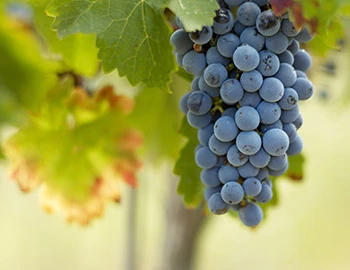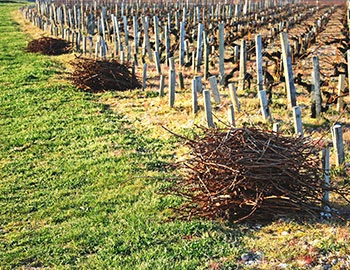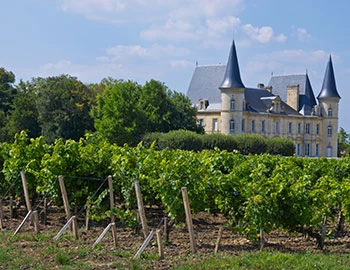
Château Cantenac-Brown 2019
AC Margaux, Cru classé, 750 ml

| Grape variety: | Cabernet Sauvignon, Cabernet Franc, Merlot |
| Producer: | Château Cantenac-Brown |
| Origin: | France / Bordeaux / Margaux |
| Other vintages: |
Description
Deep garnet with lovely hue. Fresh Merlot notes on the nose with fresh fruit such as blackberries. On palate a nice combination of the power and elegance of Cabernet. The oak tannins blend well in this wine, but ensure great ageing potential. This Margaux perfectly expresses the tender characteristics of the terroir.
Attributes
| Origin: | France / Bordeaux / Margaux |
| Grape variety: | Cabernet Sauvignon, Cabernet Franc, Merlot |
| Ripening potential: | 5 to 10 years |
| Drinking temperature: | 16 to 18 °C |
| Volume: | 13.5 % |
| Note: | Contains sulphites |
Merlot
Everybody’s darling
Merlot is the most charming member of the Bordeaux family. It shines with rich colour, fragrant fullness, velvety tannins and sweet, plummy fruit. It even makes itself easy for the vintner, as it matures without issue in cool years as well. This is in contrast to the stricter Cabernet Sauvignon, which it complements as a blending partner. Its good qualities have made the Merlot famous worldwide. At over 100,000 hectares, it is the most-planted grape in France. It also covers large areas in California, Italy, Australia and recently in Eastern Europe. The only catch is that pure Merlot varieties rarely turn out well. Its charm is often associated with a lack of substance. Only the best specimens improve with maturity. They then develop complex notes of leather and truffles. This succeeds in the top wines from the Bordeaux appellation of Pomerol and those from Ticino, among others.

Margaux
Margaux: a guarantor of finesse
For Bordeaux experts, it makes perfect sense that this prestigious appellation in the southern part of the Médoc, just 30 kilometres from Bordeaux's city centre, has a female first name. The best Margaux crus, owing to their delicacy and subtle elegance, are frequently described as feminine. Nonetheless, Margaux wines have been increasing in fullness as a result of a warming climate. Despite their elegance, the wines possess great longevity.

Bordeaux
Bordeaux: high prestige, high quality
With a total area of around 115,000 hectares, Bordeaux may not be France’s largest wine-growing region, but it is certainly its most prestigious. The range of wines produced here today is enormous: ranging from red everyday wines with a great relationship between price and quality to exclusive, and accordingly expensive, premier crus. Elegant white wines and noble sweet specialties round out the spectrum.

France
France – Philosophy in a bottle
According to French philosophy, wine should be an expression of the soil and climate. They use the word “terroir” to describe this. Terroir makes every wine different, and many especially good. French wine is regarded worldwide as an expression of cultural perfection. The French believe that humans are responsible for the quality of the berries, the vine variety for their character, and nature for the quantity. This philosophy can be expressed succinctly as: “the truth is the vineyard, not the man.”


